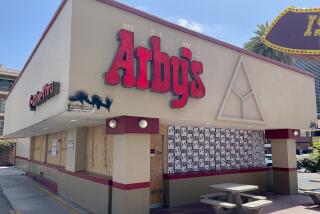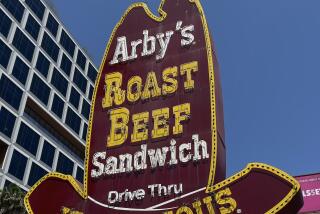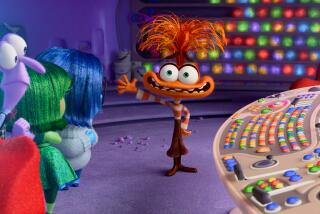Why the Drive-In Is Out
Getting there is no longer half the fun.
Last week, as plans were announced to close one of the San Fernando Valleyâs two remaining drive-in theaters to make way for a multiscreen indoor theater, obituaries waxed nostalgic about the passing of an era and bade farewell to simpler times.
Regrettable, some said. Inevitable, said others, blaming the Winnetka Drive-Inâs demise on definable factors such as gas prices and rising real estate values. Some deep thinkers even figure that the rise in popularity of bucket seats, and the consequent difficulties of vehicular romance, did more to do in drive-ins than anything else.
Whatâs happening, though, is a uniquely American transformation harder to define and explain. The nation that invented the drive-in culture of carhops, milkshakes and cozy bench seats is reshaping itself yet again, subtly changing to a drive-through culture of convenience, speed and efficiency.
But from grabbing a cafe latte to picking up dry cleaning, drive-throughs are flourishing. There are even drive-through mortuaries.
The shift is driven by a combination of forces. Part of it is the changing way in which we view the automobile. Familiarity breeds contempt. The drive-in theaters and diners that sprouted during the autoâs adolescence are dying in large part because the car is no longer the mythic machine it once was.
Cars promised freedom. Adventure. Equality.
And in most ways, they measured up, giving people mobility and choices and opportunities unimaginable just 80 years ago. They changed the way we think of everything from landscapes to distances. They even changed the way we talk.
âWith the automobile came the notion of âgrabbingâ something to eat,â Kenneth T. Jackson wrote in âCrabgrass Frontier: The Suburbanization of the United States.â
âThe first drive-in restaurant, Royce Haileyâs Pig Stand, opened in Dallas in 1921, and later in the decade, the first fast-food franchise, White Tower, decided that families touring in motorcars needed convenient meals along the way.â
In those days, driving was an adventure and a convenient meal was like an oasis in the desert. The roads were narrow and often poorly marked. Cars were finicky. But they were also the prized possessions of most families, steel status symbols that proclaimed in every curve and piece of chrome that Dad survived the war and now was chasing the American Dream.
Sitting in a drive-in parking lot, attended by a frenetic army of roller-skating blonds, was part of that dream, a chance to wander out of the neighborhood and show off the blessings of liberty.
But cars became routine, supplanted--except in the most extreme cases--as icons of American prosperity. Theyâre taken for granted in most quarters. Autos today are appliances of convenience and necessity, much like microwave ovens and toasters. Indeed, most road trips are now about as exciting as making toast.
Interstate highways and four-lane roads turned everyday driving into a humdrum pursuit. Cars lost their personalities. Gone are the confident fins and menacing grilles; instead, there are functional cup holders and digital clocks.
The mystique of the open road survives, but not generally in cars. Folks now hop on motorcycles in search of the same sort of freedom. Or they load up JetSkis or dirt bikes and tow them off for the weekend behind the old family car, now little more than a mechanical workhorse.
Besides, while modern ergonomics have made cars extremely comfortable to drive, it is often painfully difficult to do anything else. Those who remember a date at the drive-in, where the featured film was the secondary attraction, would have a tough time finding passion in the family Accord these days without slipping a disc.
Cars, in short, are now places where we spend as little time as possible, but more time than we would like. The notion of sitting in a car eating a cheeseburger or watching the latest thriller as the kids wrestle over French fries in the back seat is about as appealing to most people as going tubing down the river Styx.
Instead, we want the stuff 10 minutes ago. Weâre willing to tolerate drive-through clerks with social skills one step above a sociopathâs in exchange for never turning off the engine or even even taking the car out of gear.
So in a way, the very success of the automobile killed drive-in theaters and restaurants. As the car market became more democratic and more pedestrian, the romanticism that kept drive-ins alive was engineered out.






